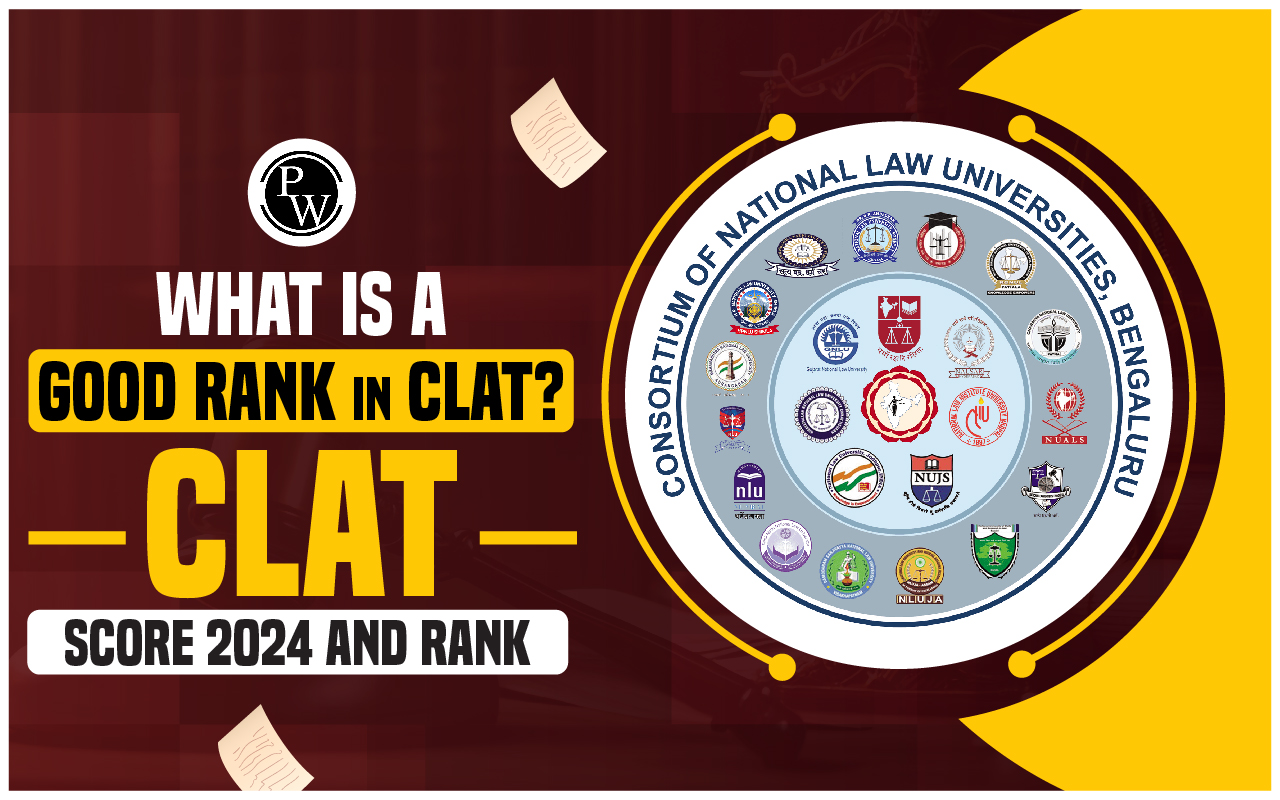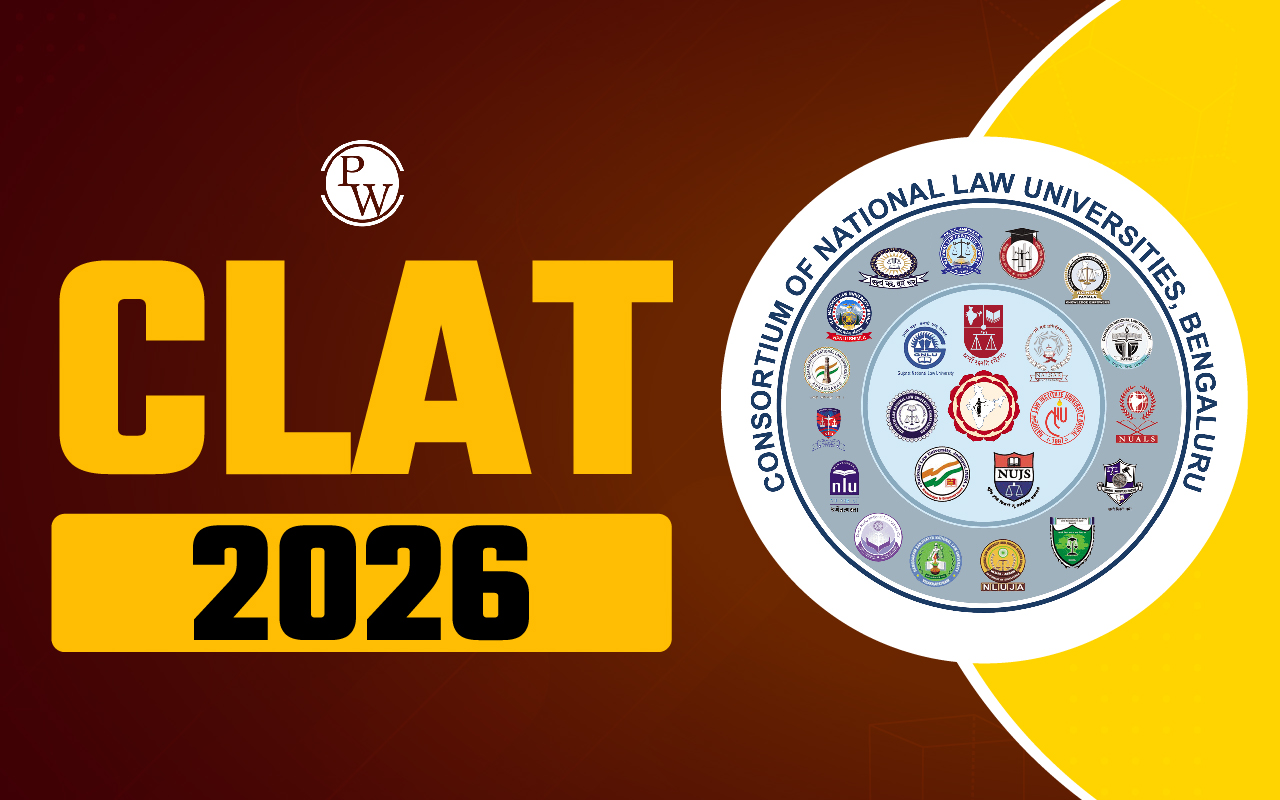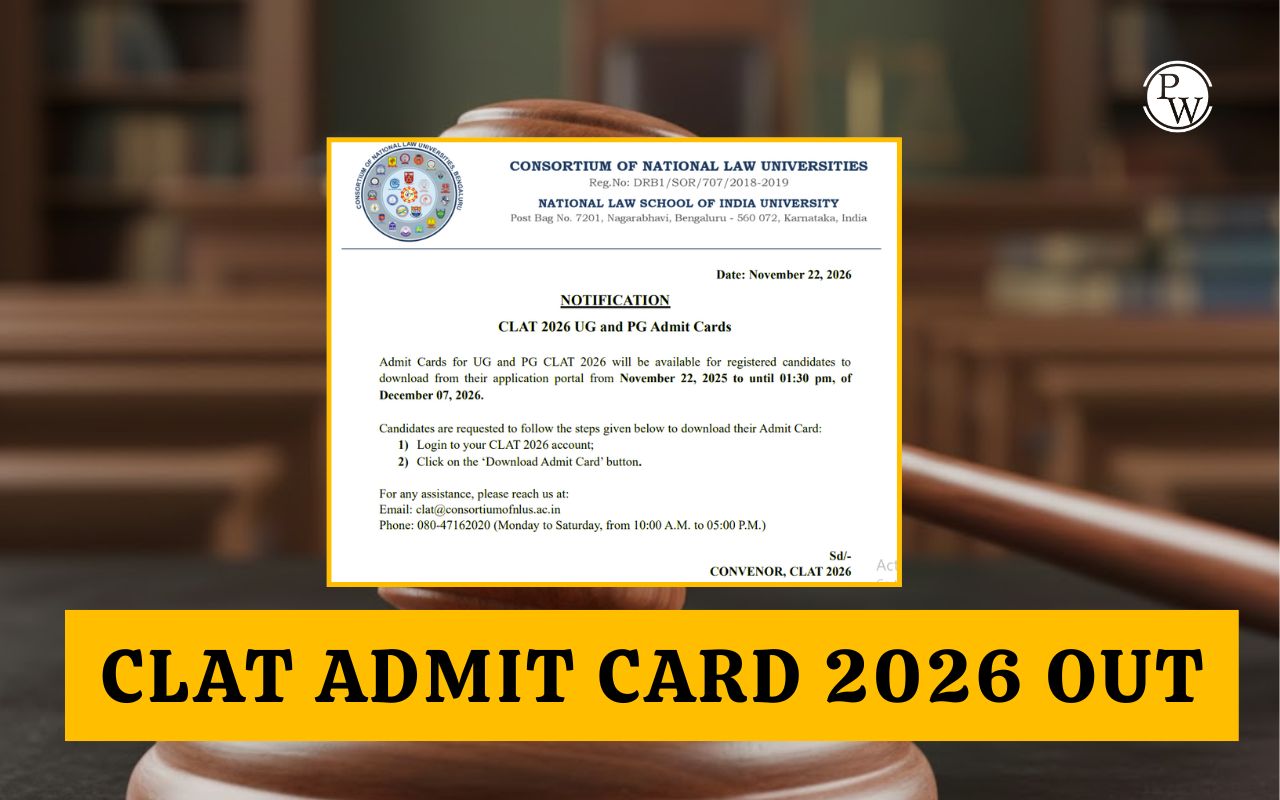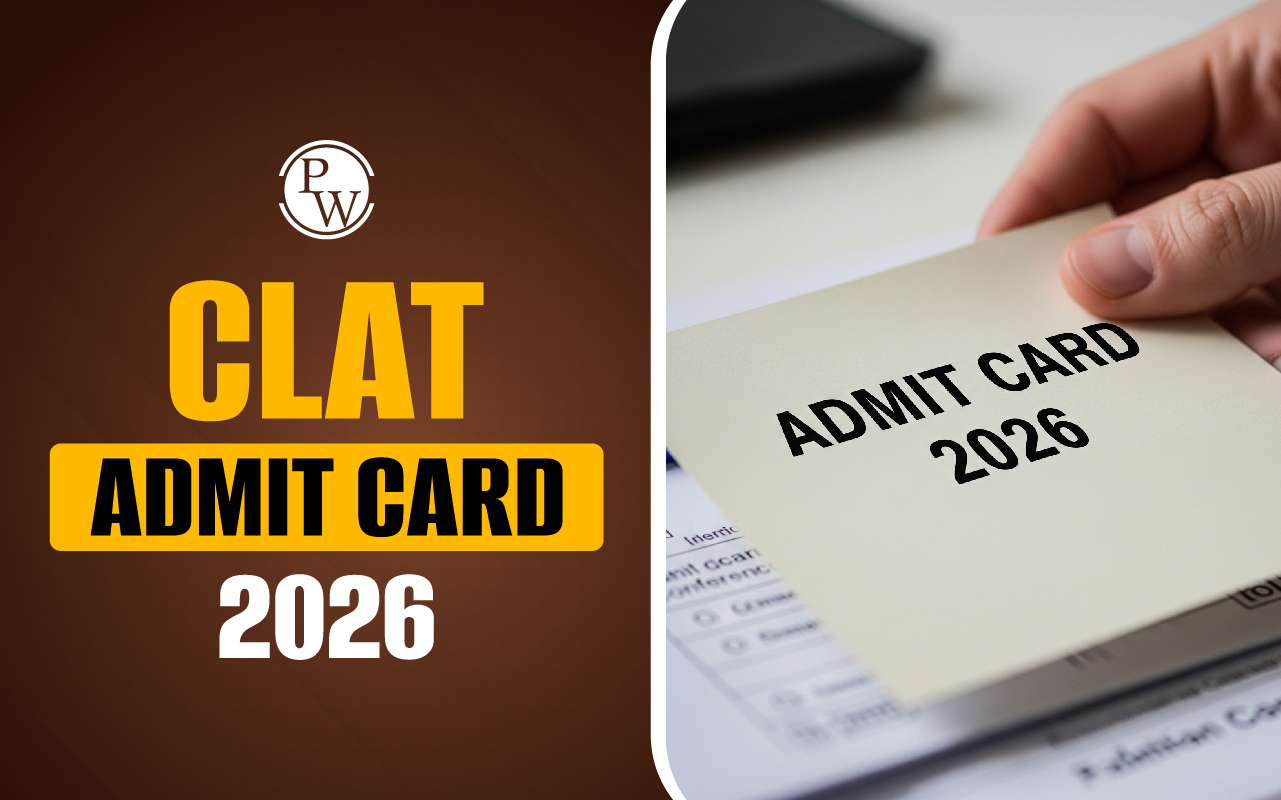

What is a Good Rank in CLAT: The Common Law Admission Test (CLAT) is highly competitive, with more than 60,000 applicants vying for around 4,000 seats in prestigious law universities. Achieving a high score in the CLAT PG exam is essential for admission to a top National Law University (NLU). However, what really matters is your rank in the exam. Securing admission to these respected NLUs is tough, and your rank decides your success.
It's not merely about achieving a high score, it's about scoring high enough to secure a place in your desired NLU. Understanding CLAT PG Marks is crucial for aspirants. Determining what constitutes a good score in CLAT 2025 exam involves considering previous university cutoffs, available seats, reservation policies, and other key factors influencing admissions.
Checkout Law Books from PW Store
What is a Good Rank in CLAT? Overview
The Common Law Admission Test (CLAT) is a tough entrance exam for getting into top law colleges in India like the National Law Universities (NLUs). Many students wonder what rank they should aim for in CLAT. In this detailed talk, we'll look into what affects CLAT ranks, why different NLUs have different rank expectations, and how to aim for a good CLAT rank.
For general category candidates, aim for a score of around 80 or more to get into top NLUs. Reserved category students should target a score of 70 or above for NLU admissions.
| Performance Level | Score Range |
|---|---|
| Excellent | 85 and above |
| Strong | 75 - 84 |
| Moderate | 65 - 74 |
| Below Standard | Below 65 |
Is 50 a Good Score in CLAT?
A score of 50 in CLAT is considered relatively low and may limit your chances of securing admission to top National Law Universities (NLUs). Based on the typical CLAT marks vs rank analysis, a score around 50 usually falls in the 20,001 to 30,000 rank range, which means you are unlikely to get into a premier law school. To be competitive, candidates should aim for a score of 80 or above, which increases the probability of getting into top 20 NLUs.With this score, students are likely to be admitted to lower or new NLUs like NLU Sonipat. To secure admission to tier 1 and tier 2 NLUs such as NLISU Bangalore, NLU Delhi, NALSAR Ahmedabad, NUJS, GNLU, candidates should aim to score above 75 marks in CLAT 2026.
Analyzing CLAT PG 2026 Marks vs Rank
The connection between your CLAT marks and your rank can change each year. It depends on how hard the exam is and how well everyone else does. Usually, if you get higher marks, you'll have a better rank, but this can change depending on the exam's difficulty and how others perform. Here are some important things to know:
- Relative Performance: CLAT is a competitive test. Your rank is decided by how you do compared to all the other students who took the test that year. If you do better than most others, you'll have a higher rank.
- Normalization: CLAT adjusts marks to make up for differences in question difficulty. This makes sure everyone is treated fairly when ranks are calculated.
- Cutoffs: Each National Law University (NLU) or law school may set its own minimum marks for admission. If you score above this cutoff, you're considered for admission. Cutoffs can differ between institutions and affect how important your rank is.
- Variability: CLAT difficulty can change from year to year, affecting how marks and ranks match up. If one year's test is harder, everyone might get lower scores, changing rank order.
- Merit List: CLAT makes a list of all candidates' scores, ranking them accordingly.
- Tie-breaking: If two or more candidates have the same score, other factors like age or random selection may be used to decide who gets which rank.
- Category-wise Ranks: CLAT gives separate ranks for different categories like SC/ST/OBC/PwD. Your rank within your category might be different from your overall rank, depending on others' scores in that category.
Remember, while higher marks usually mean a better rank, the details of how ranks are decided can change each year. It's important to check the official CLAT website and counseling information for the latest details on marks and ranks for each CLAT exam.
Also Read: CLAT Consortium
Marks Calculation Process for CLAT PG 2026
The marks calculation process for CLAT PG 2026 involves the assessment of candidates' performance in the entrance exam, which consists of multiple-choice questions covering subjects like Constitutional Law, Jurisprudence, and other legal topics. Each correct answer earns one mark, while an incorrect answer results in a deduction of 0.25 marks (negative marking). The final score is based on the total marks earned, which are then used to determine the candidate's rank for admission to postgraduate law programs at participating institutions.
- Understanding the relationship between CLAT marks and rank is essential for securing admission to CLAT participating colleges.
- While marks and rank are connected, other factors like the difficulty level of the exam and the performance of other candidates also influence rank.
- Having high marks doesn't guarantee a top rank if other candidates perform exceptionally well.
- A good rank is crucial for securing a seat in prestigious law universities, so it should not be underestimated.
- To improve your rank, focus on consistent preparation and aim to balance accuracy and speed during the exam.
- Stay informed about previous years' cutoff marks and ranks to set realistic targets for yourself.
- By keeping these key takeaways in mind, you can better understand the dynamics between CLAT marks and rank and plan your preparation for success.
What is a Good Rank in CLAT FAQs
What is a good score in CLAT?
How to determine CLAT marks vs rank 2025?
What is a good score in CLAT 2025?
How difficult is it to get a CLAT rank?
Is 4000 a good rank in CLAT?












